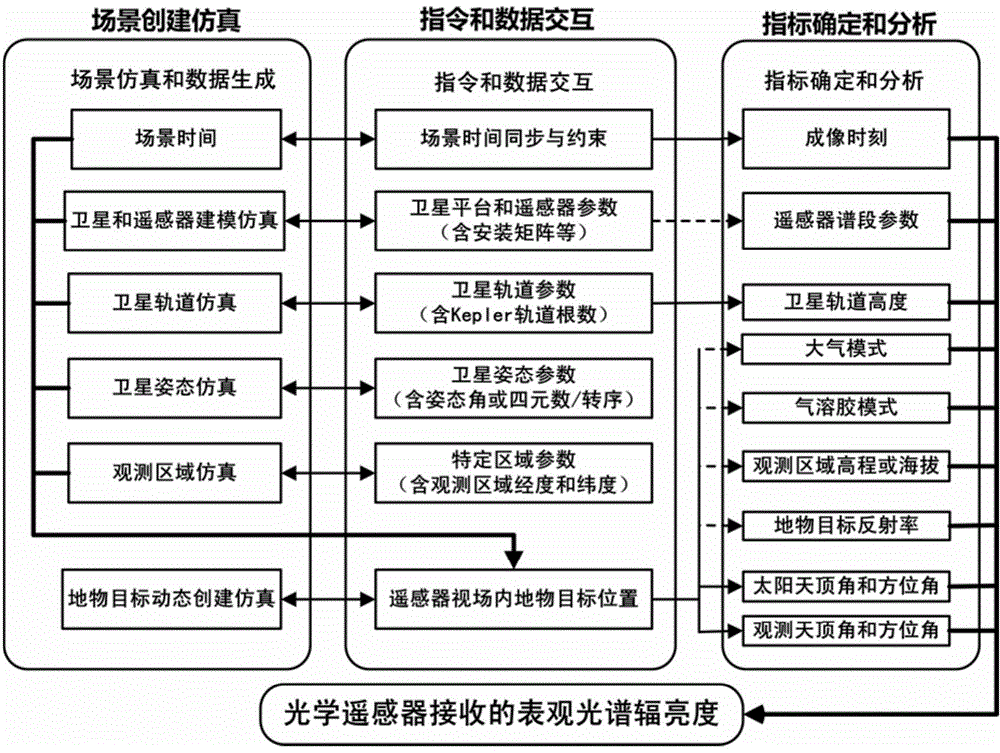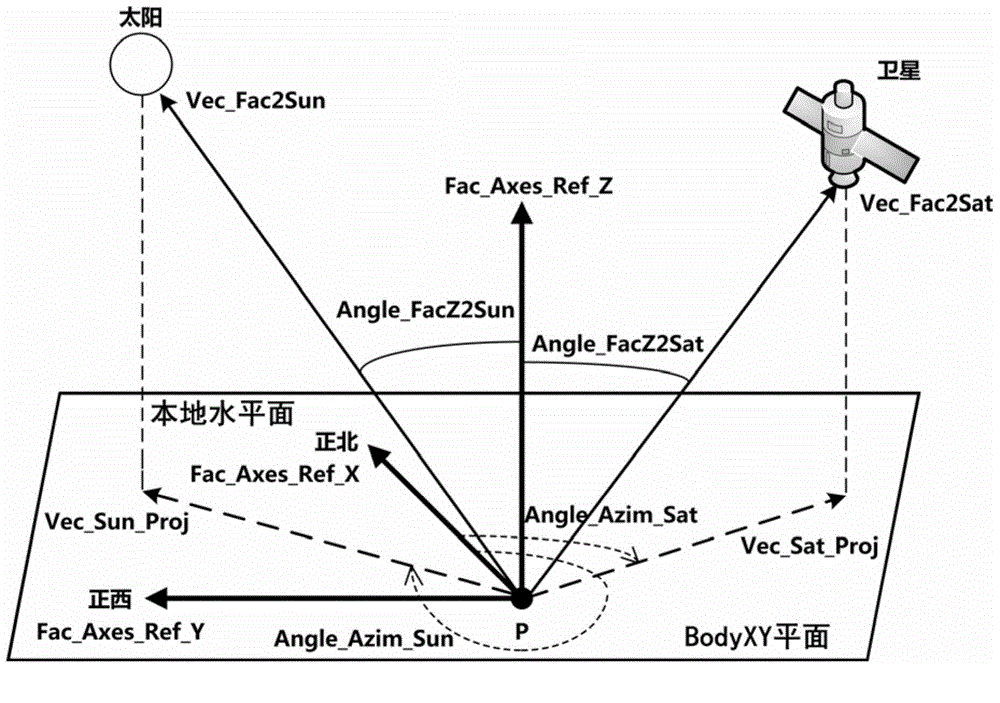Method for determining full-field-of-view apparent spectral radiance of satellite-borne optical remote sensor
An optical remote sensor and spectral radiance technology, applied in the field of optical agile satellites, can solve the problems of not considering the working mode and characteristic parameters of satellites and remote sensors, errors, and low accuracy of calculation results, so as to achieve good real-time performance and real calculation results , a wide range of effects
- Summary
- Abstract
- Description
- Claims
- Application Information
AI Technical Summary
Problems solved by technology
Method used
Image
Examples
Embodiment Construction
[0062] The invention provides a method for determining the apparent spectral radiance of the full field of view of a spaceborne optical remote sensor, especially for optical satellites equipped with large field of view wide-width remote sensors or optically agile satellites equipped with high-resolution remote sensors , this method gives the apparent spectral radiance received at the corresponding field of view of the pixel at different positions on the focal plane of the remote sensor. This method is applicable to optical satellite remote sensors with different types of optical systems, and guides the related design and verification work of aircraft in different development stages.
[0063] The method of the present invention utilizes MATLAB software to control satellite tool kit STK (Satellite Tool Kit) software, obtains the data such as the observation geometry parameter of optical satellite remote sensor different fields of view, satellite orbit parameter, feature object po...
PUM
 Login to View More
Login to View More Abstract
Description
Claims
Application Information
 Login to View More
Login to View More - R&D
- Intellectual Property
- Life Sciences
- Materials
- Tech Scout
- Unparalleled Data Quality
- Higher Quality Content
- 60% Fewer Hallucinations
Browse by: Latest US Patents, China's latest patents, Technical Efficacy Thesaurus, Application Domain, Technology Topic, Popular Technical Reports.
© 2025 PatSnap. All rights reserved.Legal|Privacy policy|Modern Slavery Act Transparency Statement|Sitemap|About US| Contact US: help@patsnap.com



